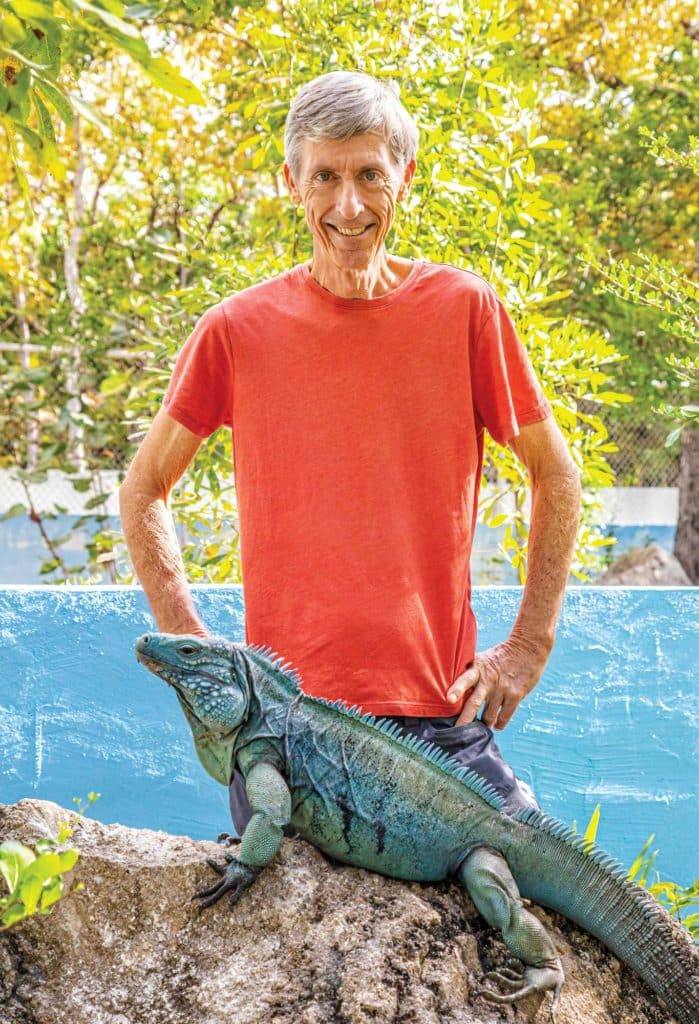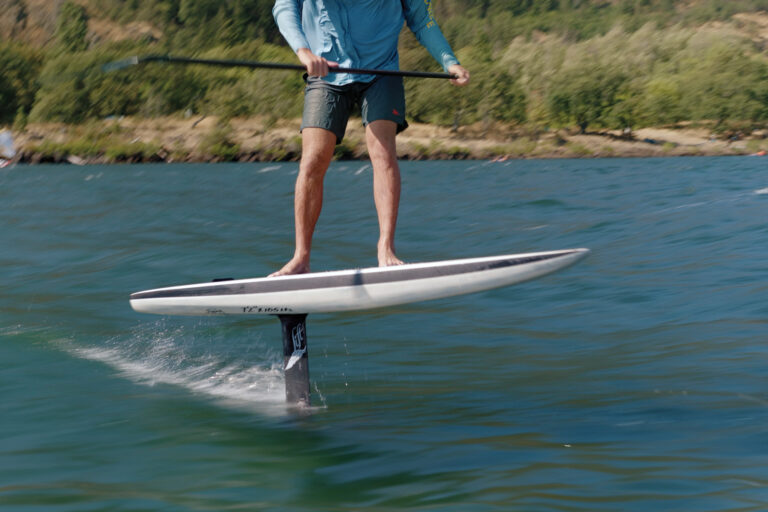
When Fred Burton arrived in the Cayman Islands from Cambridge University in 1979, the research assistant set his sights on one animal: the mosquito. But one day, while he conducted a mosquito-control survey, a completely different creature had its eye on Burton.
“There was a red eye staring at me from underneath a tree,” he says. “As I looked closer, I realized it was this big, spiky blue reptile. I wondered if I was hallucinating. I had no idea something like that even existed.”
That “something” was the blue iguana, a critically endangered lizard. The encounter was fascination at first sight for Burton, who has devoted his career to the protection and propagation of this iconic animal of the Cayman Islands.
Feral dogs, cats and green iguanas had ravaged the blue iguana population to the point that by 2002, only 10 to 25 of the iguanas were thought to exist in the wild, a number that made them “functionally extinct.” Burton spearheaded a conservation effort to restore the population to 1,000, starting with the hundreds of eggs he hatched in his home office.
He also secured a protected inland preserve from the government and launched a conservation facility in Grand Cayman’s Queen Elizabeth II Botanic Park, where visitors can take a behind-the-scenes tour and see these exotic creatures up close.
What’s special about the blue iguana? They’re large, impressive creatures—quite dragonlike, quite fearsome. They’re very smart in their own way. They can think ahead, make plans and carry them out.
How did it feel when you released your thousandth blue iguana in 2018? The real reward for me was the first time I walked through the botanic park and saw three or four iguanas just lying there. It was a remarkable change from the 1980s, when we would search weeks or months for one.
Free Burton’s Best of Grand Cayman
Ristorante Pappagallo (West Bay): It’s a wonderful place to go for celebrating a special occasion.
Over the Edge (Old Man Bay): It’s a rustic place with tasty fare right at the edge of the sea on a quiet part of the island.
Mastic Trail (Grand Cayman): The trail is a chance to see the island’s untouched ancient primary forest. You can find forest birds, hermit crabs and all kinds of reptiles there.








